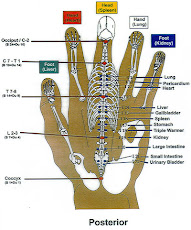Blind man sees wife for first time after having a tooth implanted into his eye
When Martin Jones met his wife four years ago, he never imagined that one day he would get to see what she looked like.
The 42-year-old builder was left blind after an accident at work more than a decade ago.
But a remarkable operation - which implants part of his tooth in his eye - has now pierced his world of darkness.
The procedure, performed fewer than 50 times before in Britain, uses the segment of tooth as a holder for a new lens grafted from his skin.
'The doctors took the bandages off and it was like looking through water and then I saw this figure and it was her,' he said today.
'She's wonderful and lovely. It was unbelievable to see her for the first time.'
He added: 'When I found out there was a chance I would get my sight back, the first person I wanted to see was her.'
Mr Jones, from Rotherham, South Yorkshire, married his wife Gill, 50, four years ago.
By that time he had already spent eight years without his sight after a tub of white hot aluminium exploded in his face at work in a scrapyard.
He suffered 37 per cent burns and had to wear a special body stocking for 23 hours a day. He also had his left eye removed.
But surgeons were able to save the right eye, even though he was unable to see through it.
At first specialists in Nottingham tried to save his sight using stem cells from a donor but the attempt failed.
It was only when a revolutionary new operation was pioneered at the Sussex Eye Clinic in Brighton that he was given a chance to have his sight back.
Surgeon Christopher Liu used a living tooth to carry a new lens because Mr Jones' eye could reject a plastic implant
It is implanted under an eyelid where it becomes covered in tissue.
The process requires a living tooth as an implant because doctors suggest there are chances the eye would reject a plastic equivalent.
So a canine - which is the best option due to its shape and size - was taken out of Mr Jones' mouth.
A patch of skin is then taken from the inside of the cheek and placed in the eye for two months, where it gradually acquires its own blood supply.
The tooth segment is finally transplanted into the eye socket. The flap of grafted skin is then partially lifted from the eye and placed over its new sturdy base.


















No comments:
Post a Comment